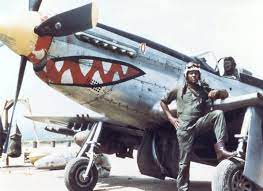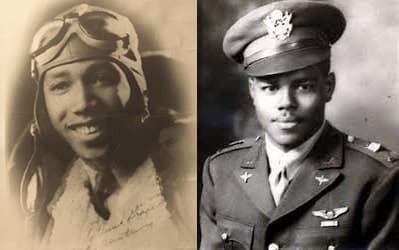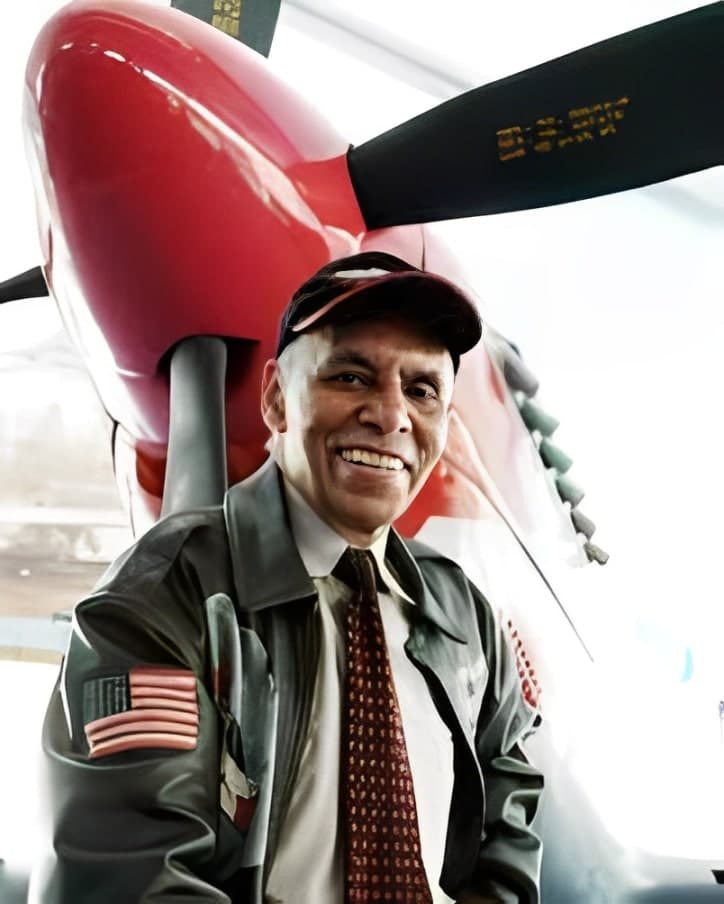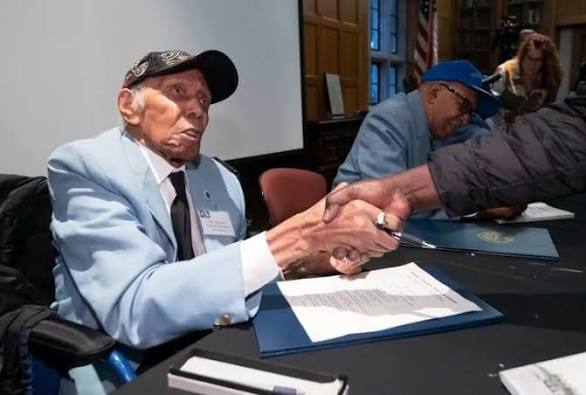Do you know who Roscoe Dubois Draper is? Roscoe Draper was a “tripled-rated” legendary aviation instructor during World War II. Over 900 Tuskegee Airmen carried on his legacy into history. His dedication strengthened one of World War II’s most significant breakthroughs—the Tuskegee Experiment. The great black pilots, Tuskegee Airmen, called him “Coach”, why? Let’s unwrap the inspiring story of a great hero of Black American history.
How Roscoe Dubois Draper got into Aviation?
Roscoe Dubois Draper was born to his parents, Edgar and Ethel Draper, on May 14, 1919, in Haverford, Pennsylvania. He was the fourth of his nine siblings. He was in Haverford and Bryn Mawr, Pennsylvania, in his early life. Draper completed graduation with honors from Haverford High School in 1937.
In 1939, Roscoe Draper enrolled at Hampton Institute for the auto mechanic program. Hampton University is the old Hampton Institute. Hampton University’s address is Hampton, Virginia. Then Draper joined the Civilian Pilot Training Program (CPTP). He earned his private pilot license in 1940.

Roscoe Draper and the Tuskegee Airmen
The great moment came in 1942 when Roscoe Draper became an instructor of the Tuskegee Airmen. Roscoe Dubois Draper was one of the first ten black men selected for the advanced flight instructor program at Tuskegee Institute. The Tuskegee Experiment was a training program to test the excellence of Black pilots as military aviators. The Tuskegee Airmen were unique because instructors like Roscoe Draper trained them.
Draper’s students loved his mentorship so much that they nicknamed Roscoe Draper “Coach”. Draper’s mentor, C. Alfred Anderson, was also one of the instructors in Tuskegee. The students nicknamed him “Chief”. The Chief and the Coach changed the history of the Black American forces at Tuskegee. Draper trained over nine hundred Tuskegee Airmen at Moton Field in Tuskegee, Alabama. They proved their Black excellence during World War II.

The Legacy of “Coach” Roscoe Dubois Draper
The coach Roscoe Draper taught over 900 Tuskegee Airmen Red Tails during World War II. Roscoe Draper never flew combat missions himself. But his teaching style in the classroom and airfield shaped the renowned black pilots. His calm and confident professionalism became legendary among cadets. They described his attitude as “steel-nerved yet compassionate.”
Roscoe Dubois Draper was also involved with the academic board of Tuskegee Institute. He helped in shaping educational policy and curriculum during that crucial time. He left a legacy through his pilot students whom he trained and inspired.
How Was His Life After the War?
Roscoe Dubois Draper was honorably discharged in November 1945. He returned to Pennsylvania. He worked at the post office until 1968, but remained connected to aviation. Later, he joined the Civil Aeronautics Authority, which is now the Federal Aviation Administration (FAA).
Roscoe Draper worked as a pilot examiner and accident investigator. Surprisingly, he earned helicopter instructor status at age sixty. He set an example of achieving a goal at any age. He started to work with the Federal Aviation Administration (FAA) in 1970. He also worked with technical responsibility to ensure safe skies.
The Honours and Recognitions awarded to Roscoe Dubois Draper
The Tuskegee Airmen were awarded the Congressional Gold Medal by the U.S. Congress in 2007. This is the highest civilian honour in America. Draper received an individual bronze replica of the medal. The original one is preserved at the Smithsonian Institution.
Draper’s fellow pilots, friends, and students honoured him with a proclamation in 2022. He received this honour on his 103rd birthday in Westwood, New Jersey. They noted in the declaration how effectively he transmitted his technical knowledge to his students. This honour reminds us how connected he was with his community.
Roscoe Dubois Draper also attended a red carpet event with the Tuskegee Airmen movie cast in New York. It was a 2012 film named “Red Tails”. Roscoe Draper breathed his last at age 105 in Westwood, New Jersey, on October 31, 2024. Even though he left this world, he will remain an inspiration to thousands of young Black aviators.

Roscoe Dubois Draper and Black Excellence
The “Tuskegee Experiment” is an unforgettable part of history. African-American pilots could not join the U.S. Air Force before World War II. Senior officials believed Black pilots were not competent enough for combat aviation. The Tuskegee Program gave them a long-awaited opportunity to demonstrate their skill. Thus, the Tuskegee Experiment was very crucial to Black pilots. And the Tuskegee Airmen proved their courage to the world.
The Coach, Roscoe Dubois Draper, trained the heroes behind every mission. A student can show his talent to the world if he gets such a qualified mentor. Roscoe Draper was the instructor who paved the way for the famous “Red Tails.” His care and professionalism elevated the entire Tuskegee Program.
Roscoe Draper was one of the first Black flight instructors in the U.S. Army Air Corps. He embodied Black struggle and excellence throughout his life. The Tuskegee Airmen played a significant role in abolishing segregation in the armed forces. Draper continued his dedication to the aviation sector in his post-war career, too.
Draper showed his technical mastery as an examiner and accident investigator at the Federal Aviation Administration (FAA). He learned to instruct helicopter pilots at his 60. That demonstrates his learning and teaching spirit he possessed for the years.
Roscoe Draper: A Portrait of Courage
Draper lived a long life, 105 years, which made him a bridge between new generations and the Tuskegee story. “The Roscoe Draper Chapter of Black Pilots of America” was named after him in 1996 to remember his distinguished contribution. That will help to carry forward his legacy to the next generations.
Roscoe Draper didn’t fight with a weapon in the war, but he trained the most successful air fighters of U.S. history. His legacy was carried forward and shaped thousands of students. He was an example against systemic racial segregation. His glorious career in aviation is nothing but the result of his unwavering resilience. He was an inspiration to other Black youth.
Draper graduated with honors and built a career in the aviation sector. Not only that, he paved the way with his excellence to shape U.S. aviation’s future. He saw his students to be honored, recognized, and their story preserved. Roscoe Dubois Draper, one of the historical black history figures, showed how teaching becomes a historic act.
Flight Path to Equality
Roscoe Dubois Draper himself never flew in air combat, but he trained and shaped thousands to do that. He was one of the first Black flight instructors at Tuskegee during World War II. He groomed over 900 Black pilots into military pilots. He inspired them to show their courage to break the barriers of systemic racism.
Roscoe Draper groomed thousands of Black pilots throughout his life. His courage spread out through the classroom to the cockpit wing. That was silent but strong enough to abolish segregation. That influenced many Black youth to build equality. Roscoe Draper showed the path to fight against discrimination.
We remember his legacy, which countless educators, mentors, and supporters of movements carried forward. He proved with his influence that Black Lives Matter. Roscoe Dubois Draper inspired black youth to break all barriers and fly in the skies of equality.
Read more to know about the famous all Black fighter pilots, The Tuskegee Airmen.







